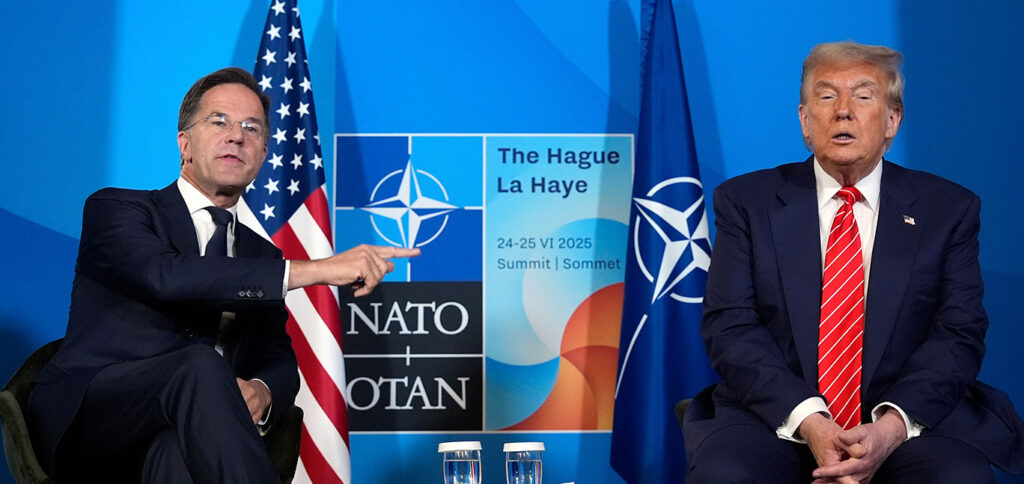NATO Secretary General Mark Rutte, left, and U.S. President Donald Trump meet at the NATO summit in The Hague, Netherlands, on June 25, 2025. THE ASSOCIATED PRESS
At the urging of the United States, NATO leaders on June 25, 2025, agreed to increase defense spending and reaffirmed an “ironclad commitment” to come to each other’s aid if attacked, confirming NATO Secretary-General Mark Rutte’s billing of the alliance’s annual summit as “transformational.”
In a final statement, NATO’s 32 leaders said: “Allies commit to invest 5% of GDP annually on core defense requirements as well as defense- and security-related spending by 2035 to ensure our individual and collective obligations.” U.S. President Donald Trump called the spending boost “something that no one really thought possible.” He has been advocating for major spending increases from European allies for years.
The agreement requires NATO countries to boost defense spending by tens of billions of dollars, and progress will be reviewed in 2029. “Together, allies have laid the foundations for a stronger, fairer and more lethal NATO,” Rutte said after chairing the annual meeting in The Hague, Netherlands. “This will fuel a quantum leap in our collective defense.”
Rutte’s plan widens the definition of military spending to include “infrastructure and resilience.” NATO countries will be able to count investments in technology; construction of roads, bridges and other transportation infrastructure; education; health services; and aid to Ukraine toward the 5% goal.
Twenty-three of NATO’s 32 members were meeting the previous 2% spending benchmark by the end of 2024. While the new agreement sets a target date of 2035 for spending increases, Rutte initially proposed 2032 as a goal. Nations on the eastern flank, closer to Russia, want it to happen even sooner. “We don’t have time even for seven years,” Defense Minister Hanno Pevkur of Estonia said recently. “We have to show that we have everything we need to defend our countries.”
NATO intelligence indicates Russia could mount an offensive against NATO nations within five years after the Ukraine war ends, pressuring alliance members to ramp up spending. “The threats are driving the timeline,” Matthew G. Whitaker, U.S. ambassador to NATO, said recently, according to The New York Times newspaper. “Europe keeps telling us that Russia is their biggest threat and we agree, in the Euro-Atlantic it is. And so we need to make sure everybody’s investing.”
Poland had the highest percentage of spending at 4.12% of GDP, while the United States was at 3.38%. The U.S. has the highest GDP in the world, so its overall spending dwarfs that of its NATO Allies.

